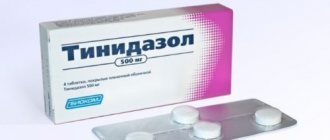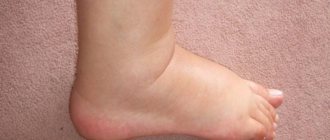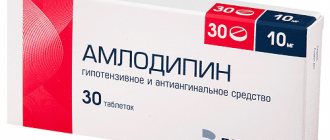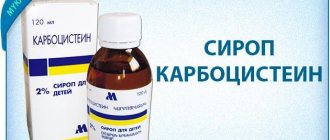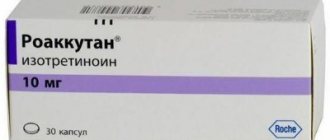pharmachologic effect
Low-dose monophasic oral combined estrogen-progestogen contraceptive drug. The action of the drug Bonade® is based on the combined action of various factors, the most important of which is the suppression of ovulation and an increase in the viscosity of cervical secretions.
The gestagenic component of the drug Bonade®, dienogest, is a derivative of nortestosterone and has an antiandrogenic effect. Dienogest also has a beneficial effect on the lipid profile, increasing HDL levels.
In women taking combined oral contraceptives (COCs), the cycle becomes more regular, painful menstruation is less frequent, and the intensity and duration of bleeding decreases.
Pharmacokinetics.
Dienogest
Suction
After oral administration, dienogest is rapidly and almost completely absorbed. Cmax in blood plasma (51 ng/ml) is achieved 2.4±1.4 hours after taking the drug. Bioavailability in combination with ethinyl estradiol is about 96%.
Distribution
Dienogest binds to serum albumin (90%) and does not bind to specific transport proteins - sex hormone binding globulin (SHBG) and corticosteroid binding globulin (CBG). Any effect on the processes of physiological transport of endogenous steroids is unlikely. The increase in SHBG concentrations induced by ethinyl estradiol does not affect the binding of dienogest to serum proteins.
Equilibrium concentration. The pharmacokinetics of dienogest are not affected by the concentration of SHBG. After taking a daily dose, the concentration of the drug in the blood plasma increases approximately 1-5 times, and Css is reached after approximately 4 days.
Metabolism
Dienogest is metabolized primarily by hydroxylation, but also by hydrogenation, conjugation and aromatization to form inactive metabolites.
Removal
The total clearance after a single dose is 3.6 l/h.
T1/2 of dienogest is 8.5-10.8 hours. A small amount of dienogest is excreted unchanged by the kidneys. Metabolites are excreted by the kidneys and bile in a ratio of 3:1. T1/2 of metabolites is 14.4 hours.
Ethinyl estradiol
Suction
After oral administration, ethinyl estradiol is rapidly and completely absorbed. Cmax in blood plasma (67 ng/ml) is achieved within 1.5-4 hours. During absorption and “first pass” through the liver, ethinyl estradiol is metabolized, resulting in an average oral bioavailability of 44%.
Distribution
Ethinyl estradiol is almost completely (98%), although nonspecifically, bound by albumin. Ethinyl estradiol induces the synthesis of SHBG. The recorded Vd of ethinyl estradiol is 2.8-8.6 l/kg.
Equilibrium concentration. Css is achieved during the second half of the treatment cycle, when serum drug levels become 2-fold higher than the single dose.
Metabolism
Ethinyl estradiol undergoes presystemic conjugation both in the mucous membrane of the small intestine and in the liver. The main route of metabolism is aromatic hydroxylation, followed by conjugation with glucuronic and/or sulfuric acids.
Removal
The value of metabolic clearance from blood plasma is 2.3-7 ml/min/kg. The concentration of ethinyl estradiol in the blood plasma decreases, and the decrease is two-phase: the first phrase is characterized by T1/2 of about 1 hour, the second - 10-20 hours.
It is not displayed unchanged. Metabolites of ethinyl estradiol are excreted by the kidneys and liver in a ratio of 4:6, with T1/2 about 24 hours.
Pharmacology
This substance is a synthetic steroid, considered a complete analogue of the natural female hormone. Ethinyl estradiol (what kind of hormone this is is described in this article) is able to interact with estrogen-type receptors. The substance begins to act instantly, since its components are very quickly absorbed through the mucous membranes of the body and the skin.
This substance is oxidized in the liver, transforming into another form. Ethinyl estradiol is excreted (what kind of hormone this is, we will look in detail) along with urine.
So, when it enters a woman’s body, this component has the following effects on her:
— weak anabolic effect;
- reduces cholesterol levels in the blood;
- helps increase calcium absorption.
Directions for use and doses
The drug Bonade® is taken orally, 1 tablet/day, without chewing and with a small amount of water, at the same time every day. The tablets are taken for 21 days without a break according to the schedule indicated on the blister. Each blister contains 21 tablets. Each tablet is marked with the day of the week on which it should be taken. Do not take pills for the next 7 days. During this period, menstrual-like bleeding should begin (withdrawal bleeding). It usually begins 2-3 days after taking the last tablet of Bonade®.
After a 7-day break, on the 8th day, begin taking tablets from a new package (if the package contains 21 tablets) or a blister (if the package contains 63 tablets), even if the bleeding has not stopped yet. This means that a woman will always start a new pack (blister) on the same day of the week and that the withdrawal bleed will occur on approximately the same day of the month each month.
How to start taking Bonade®
If you have not taken any hormonal contraceptives in the previous month, use of Bonade® should begin on the 1st day of the natural menstrual cycle (i.e., on the 1st day of menstrual bleeding). Take the tablet marked with the corresponding day of the week. For example, if your period starts on Friday, take a pill marked with the letters indicating Friday. Then, you should continue to take the tablets on the following days in the prescribed manner. It is also acceptable to start use from the 2-5th day of the cycle, but in this case it is recommended to additionally use a barrier method of contraception (condom) during the first 7 days of using the tablets from the first package (blister).
When switching from other COCs, a contraceptive vaginal ring or a contraceptive patch, you can start taking Bonade® the next day after taking the last tablet from the previous package of COCs (i.e. without interruption in use). If the previous package also contained inactive tablets (without the active substance), you can start using Bonade® the next day after taking the last active tablet. You can also start using it later, but in no case later than the next day, after the usual break in use (7 days break for drugs containing 21 tablets) or after taking the last inactive tablet (for drugs containing 28 tablets per package).
If you are using a contraceptive patch or contraceptive vaginal ring, you should start taking Bonade® on the day they are removed, but no later than the day when a new ring is to be inserted or a new patch is applied.
When switching from oral contraceptives containing only gestagen (“mini-pill”), you can stop taking the “mini-pill” on any day and start using Bonade® the next day at the same time. During the first 7 days of using the pills, you must also use an additional barrier method of contraception.
When switching from an injectable contraceptive, implant or intrauterine device (intrauterine device) that releases progestogen, you should start using Bonade® on the day the next injection is due or on the day the implant or intrauterine device is removed. During the first 7 days of using the pills, you must also use an additional barrier method of contraception.
Immediately after giving birth, your doctor may recommend waiting until the end of your first normal menstrual cycle before starting Bonade®. Sometimes, on the recommendation of a doctor, you can start using the drug earlier.
After a spontaneous miscarriage or abortion in the first trimester of pregnancy, you should consult a doctor. It is usually recommended to start using the drug immediately.
Taking missed pills
If the delay in taking the next pill is less than 12 hours, the contraceptive effect of Bonade® remains. The patient should take the tablet as soon as she remembers. The next tablet should be taken at the usual time.
If the delay in taking the pills is more than 12 hours, contraceptive protection may be reduced. The more pills in a row are missed, and the closer this missed dose is to the start or end of the dose, the higher the risk of pregnancy.
In this regard, you can be guided by the following rules:
if more than 1 tablet is missed from the package (blister), you should consult your doctor;
if 1 tablet is missed in the first week of using the drug, the missed tablet should be taken as soon as possible, as soon as the patient remembers (even if this means taking two tablets at the same time). The next tablet should be taken at the usual time. It is necessary to additionally use a barrier method of contraception for the next 7 days. If you had sexual intercourse within a week before missing the pill, you need to consider the possibility of pregnancy. You should consult your doctor immediately;
if 1 tablet is missed in the second week of taking the drug, the missed tablet should be taken as soon as possible, as soon as the patient remembers (even if this means taking 2 tablets at the same time). The next tablet should be taken at the usual time. If a woman has taken the pills correctly during the 7 days preceding the first missed pill, the contraceptive effect of Bonade® is maintained and the woman does not need to use additional contraceptive measures. Otherwise, as well as if you miss 2 or more tablets, you must additionally use barrier methods of contraception for 7 days;
If 1 tablet is missed in the third week of taking the drug, but all tablets have been taken correctly in the 7 days preceding the first missed tablet, there is no need to use additional contraceptive methods if the woman adheres to either of the following two options:
1. The missed tablet should be taken as soon as possible, as soon as the patient remembers (even if this means taking 2 tablets at the same time). The next tablet should be taken at the usual time. The next package (blister) must be started immediately after finishing taking the tablets from the current package (blister), so there will be no break between packages (blisters). Bleeding, “flushes” of blood to the skin with a feeling of heat, varicose veins, vein diseases, pain along the veins.
From the respiratory system: rarely - bronchial asthma, hyperventilation.
From the digestive system: infrequently - abdominal pain, discomfort, bloating, nausea, vomiting, diarrhea; rarely - gastritis, enteritis, dyspepsia.
From the skin and subcutaneous tissues: infrequently - acne, alopecia, rash, including macular rash, itching (including generalized itching); rarely - allergic dermatitis, atopic dermatitis, neurodermatitis, eczema, psoriasis, increased sweating, chloasma, hyperpigmentation, seborrhea, dandruff, hirsutism, skin reaction - cellulite, spider veins; frequency unknown - urticaria, erythema nodosum, erythema multiforme.
From the musculoskeletal system: rarely - back pain, discomfort from the musculoskeletal system, myalgia, pain in the extremities.
From the genital organs and mammary gland: often - pain in the mammary glands, a feeling of discomfort; uncommon - changes in the duration and volume of menstrual-like bleeding, including heavy menstrual-like bleeding, scanty menstrual-like bleeding and absence of menstrual-like bleeding, acyclic bleeding, incl. bleeding from the vagina and metrorrhagia, enlargement of the mammary glands, engorgement and a feeling of fullness in the mammary gland, swelling of the mammary gland, painful menstrual-like bleeding, vaginal discharge, pain in the pelvic area; rarely - dysplasia of the cervical epithelium, dyspareunia, galactorrhea; frequency unknown - discharge from the mammary glands.
General disorders and disorders: infrequently - fatigue, asthenia, poor health, changes in body weight (increase, decrease and fluctuations in body weight); rarely - chest pain, peripheral edema, flu-like phenomena, increased body temperature, irritability; frequency unknown - fluid retention.
From laboratory parameters: rarely - hypertriglyceridemia, hypercholesterolemia.
The following serious adverse events have been reported in women using COCs (which include Bonade®):
venous thromboembolic disorders;
arterial thromboembolic disorders;
stroke;
increased blood pressure;
hypertriglyceridemia;
impaired glucose tolerance or effect on peripheral insulin resistance;
liver tumors (benign and malignant);
violation of liver functional parameters;
chloasma;
in women with hereditary angioedema, exogenous estrogens can cause or worsen the symptoms of angioedema;
the onset or worsening of conditions for which the connection with the use of COCs (which includes the drug Bonade®) is not indisputable: jaundice and/or itching associated with cholestasis; formation of gallstones; porphyria; systemic lupus erythematosus; hemolytic-uremic syndrome; Sydenham's chorea; herpes during a previous pregnancy; hearing loss associated with otosclerosis; Crohn's disease; ulcerative colitis; cervical cancer;
visual impairment;
dizziness;
pancreatitis;
cholecystitis;
the frequency of breast cancer diagnoses in women using COCs (which include the drug Bonade®) is increased very slightly. Breast cancer is rarely observed in women under 40 years of age, the excess incidence is insignificant in relation to the overall risk of breast cancer. The cause-and-effect relationship between the occurrence of breast cancer and the use of COCs has not been established.
Due to the interaction of other drugs (inducers of microsomal enzymes) with COCs, breakthrough bleeding and/or a decrease in the contraceptive effect may occur.
If undesirable effects occur that are not listed in the instructions, the woman should inform the doctor.
Side effects
An artificial estradiol substitute can cause various disruptions in the functioning of body structures. The most commonly observed side effects include:
- allergic skin reaction;
- change in sexual activity;
- swelling and tenderness of the mammary glands;
- decreased sensitivity to glucose;
- disruptions of the digestive tract, accompanied by nausea and vomiting;
- impaired liver function, the appearance of jaundice;
- increased likelihood of blood clots;
- headaches, dizziness;
- depression;
- swelling, metabolic disorders, accompanied by weight gain.
In men, the drug "Ethinyl estradiol" can provoke gynecomastia - enlargement of the mammary glands.
Contraindications
Bonade® is contraindicated in the presence of any of the conditions/diseases listed below. If any of these conditions develop for the first time during its use, the drug should be discontinued immediately:
thrombosis (venous and arterial) and thromboembolism currently or in history (including deep vein thrombosis, pulmonary embolism, myocardial infarction);
conditions preceding thrombosis (including angina) currently or in history;
cerebrovascular disease: stroke, transient ischemic attacks at present and in history;
multiple or severe risk factors for venous or arterial thrombosis, incl. complicated lesions of the valvular apparatus of the heart, atrial fibrillation, diseases of the cerebral vessels or coronary arteries of the heart, severe dyslipoproteinemia; uncontrolled arterial hypertension, major surgery, prolonged immobilization, surgical interventions on the lower extremities and pelvic organs, neurosurgical interventions, smoking over the age of 35 years;
congenital or acquired predisposition to arterial or venous thrombosis (resistance to activated protein C (including factor 5 Leiden), antithrombin III deficiency, protein C deficiency, protein S deficiency, hyperhomocysteinemia, presence of antibodies to phospholipids (anticardiolipin, lupus anticoagulant));
migraine with focal neurological symptoms currently or in history;
diabetes mellitus with vascular complications;
pancreatitis with severe hypertriglyceridemia currently or in history;
liver failure and severe liver diseases (until normalization of liver enzymes), incl. Rotor and Dubin-Johnson syndromes;
liver tumors (benign or malignant) currently or in history;
identified hormone-dependent malignant neoplasms (including genital organs or mammary glands) or suspicion of them;
bleeding from the vagina of unknown origin;
pregnancy or suspicion of it;
lactation period (breastfeeding);
hypersensitivity to any of the components of the drug Bonade®;
galactose intolerance, lactase deficiency or glucose-galactose malabsorption (the drug contains lactose);
obesity (BMI more than 30 kg/m2);
extensive injury.
Bonade® is not intended for use in men.
Carefully
The potential risks and expected benefits of using COCs should be carefully weighed in each individual case in the presence of the following diseases/conditions and risk factors:
risk factors for the development of thrombosis and thromboembolism: smoking; obesity (BMI less than 30 kg/m2); dyslipoproteinemia, arterial hypertension; migraine without focal neurological symptoms; uncomplicated heart valve defects; hereditary predisposition to thrombosis (thrombosis, myocardial infarction or cerebrovascular accident at a young age in one of the immediate family);
other diseases in which peripheral circulatory disorders may occur: diabetes mellitus; oncological diseases, SLE; hemolytic-uremic syndrome; Crohn's disease and ulcerative colitis; sickle cell anemia; phlebitis of superficial veins;
hereditary angioedema;
hypertriglyceridemia;
diseases that first appeared or worsened during pregnancy or against the background of previous use of sex hormones (for example, jaundice, cholestasis, gallbladder disease, otosclerosis with hearing impairment, porphyria, herpes during pregnancy, Sydenham's chorea);
postpartum period.
Ethinyl estradiol - what is it?
Ethinyl estradiol is a synthetic, biologically active substance of the estrogen group that replaces the natural hormone produced by the ovaries and, in smaller quantities, by the adrenal cortex. The substance in the female body maintains the expression of secondary sexual characteristics, the proper functioning of the uterus, and the cyclical changes of the endometrium.
The chemical name of the active substance is (17 α)-19-norpregna-1,3,5(10)-trien-20-yne-3,17-diol. It is a yellowish-white fine powder, almost insoluble in water, but soluble in vegetable oils and alcohol-containing liquids. This substance is written in Latin as Aethinyloestradiolum.
Use during pregnancy and breastfeeding
Bonade® should not be used during pregnancy. If pregnancy is detected while using Bonade®, it should be discontinued immediately and consult a doctor. However, extensive epidemiological studies have not found an increased risk of developmental defects in children born to women who received sex hormones before pregnancy or who took sex hormones inadvertently in early pregnancy.
Taking COCs can reduce the amount of breast milk and change its composition, so their use is not recommended until breastfeeding is stopped.
Analogs
The pharmacy chain sells many analogues of the described drug. Some hormonal medications do not require a doctor's prescription.
Among the most popular and effective analogues that repeat the composition of the original drug or its properties, it should be noted:
- estrogen-gestagen contraceptive "Yarina";
- combined hormonal contraceptive "Triquilar";
- estrogen-gestagen contraceptive "Mersilon";
- combined contraceptive drug with three-phase action "Triziston".
- estrogen-gestagen contraceptive "Zhenetten".
special instructions
If any of the following conditions or risk factors are present, the potential risks and expected benefits of therapy should be carefully assessed and discussed with the woman before she decides to start taking the drug. If the symptoms of an existing disease intensify, the disease worsens, or the first signs of these conditions or risk factors appear when using this drug, you should consult your doctor, who may decide whether to discontinue the drug.
Thrombosis
The risk of deep vein thrombosis in women taking COCs is higher than in those not taking them, but not as high as during pregnancy.
The results of epidemiological studies indicate a relationship between the use of COCs and an increased risk of thrombosis and thromboembolic diseases, such as myocardial infarction, stroke, deep vein thrombosis and pulmonary embolism when taking COCs. These complications are rare.
The risk of developing venous thromboembolism (VTE) is greatest in the first year of use of such drugs, mainly during the first 3 months. An increased risk exists during initial use of COCs or when restarting use of the same or different COCs (after a dosing interval of 4 weeks or more).
The overall risk of VTE in patients taking low-dose COCs (<50 mcg ethinyl estradiol) is 2-3 times higher than in non-pregnant patients not taking COCs, although this risk remains lower than the risk of VTE during pregnancy and childbirth .
In very rare cases, venous or arterial thromboembolism can be fatal.
VTE, manifested as deep vein thrombosis and/or pulmonary embolism, can occur with the use of any COC.
It is extremely rare when using COCs that thrombosis occurs in other blood vessels, for example, the veins and arteries of the liver, mesentery, kidneys, brain or retina.
Symptoms of deep vein thrombosis (DVT): unilateral swelling of the lower extremity or along a vein in the lower extremity, pain or discomfort in the lower extremity only when standing or walking, localized temperature increase in the affected lower extremity, redness or discoloration of the skin on the lower extremity .
Symptoms of pulmonary embolism (PE): difficulty or rapid breathing; sudden cough, incl. with hemoptysis; sharp pain in the chest, which may intensify with deep inspiration; sense of anxiety; severe dizziness; fast or irregular heartbeat. Some of these symptoms (eg, shortness of breath, cough) are nonspecific and may be misinterpreted as signs of other more or less severe events (eg, respiratory tract infection).
If women taking COCs experience the symptoms listed above, they should immediately consult a doctor.
The risk of VTE increases:
with age;
when smoking (with heavy smoking and with increasing age, the risk increases further, especially in women over 35 years of age. Women over 35 years of age should be strongly advised to quit smoking if they
want to take Bonade®;
with a burdened family history (i.e., if there is a history of cases of venous thromboembolism at a relatively young age in parents or close relatives). If a hereditary predisposition is suspected, a woman should consult a specialist before deciding on any hormonal contraception;
with prolonged immobilization, major surgery, any operation on the lower extremities or major trauma. In these situations, it is necessary to discontinue use (in the case of elective surgery, no less than
4 weeks), and do not resume it until two weeks have passed after complete restoration of motor activity. If
the use of Bonade® has not been stopped in advance, antithrombotic therapy should be considered;
during an air flight lasting more than 4 hours;
for obesity (BMI more than 30 kg/m2).
The risk of arterial thromboembolic complications or cerebrovascular accident increases:
with age;
when smoking (with heavy smoking and with increasing age, the risk further increases, especially in women over 35 years of age. Women over 35 years of age should be strongly advised to stop smoking if they want to take Bonade®;
with dyslipoproteinemia;
with arterial hypertension;
for migraines;
for diseases of the heart valve apparatus;
with atrial fibrillation;
with a burdened family history (i.e., if there is a history of cases of arterial thrombosis at a relatively young age in parents or close relatives). If a hereditary predisposition is suspected, a woman should consult a specialist before deciding on any hormonal contraception.
Peripheral circulatory disorders may also occur in diabetes mellitus, systemic lupus erythematosus, hemolytic uremic syndrome, chronic inflammatory bowel disease (namely Crohn's disease or ulcerative colitis) and sickle cell anemia.
The increased risk of thromboembolism in the postpartum period must be taken into account.
An increase in the frequency or severity of migraine attacks while using the drug Bonade® (which may be a harbinger of cerebrovascular accident) is a reason for immediate discontinuation of the drug.
There is no consensus regarding the potential role of varicose veins and superficial thrombophlebitis in the development of VTE.
Tumors
The most important risk factor for cervical cancer is persistent human papillomavirus infection. Some epidemiological studies suggest that long-term use of COCs may contribute to this risk. However, there is still ongoing debate about the extent to which this result depends on other factors, such as cervical screening tests and more free sexual behavior and abandonment of barrier methods of contraception.
A meta-analysis of the results of 54 epidemiological studies suggests a slightly increased relative risk of breast cancer in women using COCs (relative risk 1.24). The increased risk gradually decreases over 10 years after stopping COC use. Given that breast cancer is rare in women under 40 years of age, the increase in breast cancer diagnoses in women taking or previously taking COCs is small compared to the overall risk of breast cancer. These studies do not support a cause-and-effect relationship. The observed increase in the incidence of breast cancer in women taking COCs may be due to earlier diagnosis, biological effects of the drugs, or a combination of these factors. Breast cancer diagnosed in women who are using or have previously used COCs is usually a less clinically advanced cancer than in patients who have never used them.
Isolated cases of benign liver tumors and, much less frequently, malignant liver tumors have been diagnosed in women taking COCs. In rare cases, such tumors have caused life-threatening intra-abdominal bleeding. If severe upper abdominal pain, liver enlargement, or signs of intra-abdominal bleeding occur in women taking COCs, you should consult your doctor immediately.
Other states
Women who suffer from hypertriglyceridemia or have a family history of this disease may have an increased risk of pancreatitis when using COCs.
Although small increases in blood pressure have been reported in many women taking COCs, clinically significant increases are rare. However, if a clinically significant increase in blood pressure develops (above 140/90 mmHg) while taking COCs, Bonade should be discontinued and treatment of arterial hypertension initiated. The drug can be continued if normal blood pressure values are achieved with antihypertensive therapy.
Discontinuation of COCs may be inevitable in acute and chronic liver dysfunction until all liver function tests return to normal. Relapses of cholestatic jaundice that occurred for the first time during pregnancy or during the period preceding it using COCs also require discontinuation of the drug.
The use of COCs (which includes the drug Bonade®) can cause the appearance or worsening of conditions for which the connection with the use of these drugs is not indisputable: jaundice and/or itching associated with cholestasis, formation of gallstones, porphyria, systemic lupus erythematosus, hemolytic-uremic syndrome, Sydenham's chorea, herpes during a previous pregnancy, hearing loss associated with otosclerosis.
Although COCs may have an effect on peripheral insulin resistance and glucose tolerance, women with diabetes mellitus taking low-dose COCs generally do not require dose adjustments or dosing regimens of hypoglycemic agents. However, such women should be closely monitored.
Crohn's disease and ulcerative colitis may be associated with COC use.
Chloasma (hyperpigmentation of the facial skin) can sometimes appear, especially if it occurs during pregnancy. Women with a predisposition to chloasma should avoid direct sunlight and other UV radiation while using COCs.
The disappearance of acne symptoms is usually observed after 3-4 months of therapy.
Women should be warned that Bonade® does not protect them from HIV infections and other sexually transmitted diseases.
Reduced efficiency
The effectiveness of COCs may be reduced, for example, if you miss taking pills, in case of gastrointestinal disorders (vomiting, diarrhea) or simultaneous use of other medications.
Cycle irregularity
During the use of any COC, irregular bleeding (spotting or breakthrough bleeding) may occur, especially in the first months of taking the pills. Bleeding usually stops as the body adapts to Bonade® (usually after 3 cycles of taking the tablets). If bleeding continues and its severity increases, you should consult a specialist.
Absence of regular bleeding and spotting.
Treatment: there is no specific antidote; symptomatic treatment should be carried out.
Female sex hormones
Sex hormones are a very important component of health. The ability to become pregnant, bear and give birth to a child, as well as the general condition of the body and the appearance of the woman depends on them. Under normal conditions, the body is able to take care of itself on its own. However, in some cases you simply cannot do without outside help.
The problem with the production of sex hormones lies in the functioning of the brain. Its components such as the hypothalamus and pituitary gland are responsible for this.
In medicine, female sex hormones are called “estrogens”. They are produced in the ovaries, but the signal for this is given in the brain. Of course, some of the hormones can come with food, but this proportion is very small.
There are three types of female hormones:
- estriol;
- estrone;
- estradiol.
The most recent of these is the most important for women's health and fertility. A lack of this component in the body leads to the malfunction of all organs and their systems, and also affects the development of cancer and other formations.
However, today this problem is completely solvable. There is a synthetic hormone that can completely replace the natural one. But do not forget that using it incorrectly will only worsen your condition.
Drug interactions
It is necessary to take into account information on the medical use of concomitant medications in order to identify potential drug interactions.
The influence of other drugs on the drug Bonade®
It is possible to interact with drugs that induce microsomal liver enzymes, which may result in an increase in the clearance of sex hormones, which, in turn, can lead to breakthrough uterine bleeding and/or a decrease in the contraceptive effect.
Enzyme induction can be observed after just a few days of treatment. Maximum induction of liver enzymes is usually achieved within a few weeks. After discontinuation of the drug, induction may persist for approximately 4 weeks.
Women receiving short-term treatment with such drugs in addition to Bonade® are advised to use a barrier method of contraception or choose another non-hormonal method of contraception. A barrier method of contraception should be used during the entire period of taking concomitant medications, as well as for 28 days after their discontinuation. If the use of inducer drugs lasts longer than the cycle of taking tablets in the package of Bonade®, you should start taking tablets from a new package without interruption in taking the tablets.
For women receiving long-term treatment with drugs that induce liver microsomal enzymes, it is recommended to use another reliable non-hormonal method of contraception.
Substances that increase the clearance of Bonade® (weakening the effectiveness due to induction of liver enzymes)
Barbiturates, bosentan, carbamazepine, phenytoin, primidone, modafinil, rifampicin, and HIV medications such as ritonavir, nevirapine, and efavirenz, and possibly felbamate, griseofulvin, barbexaclone, topiramate, oxcarbazepine, and medications containing St. John's wort (Hypericum) perforatum).
Substances that have different effects on the clearance of Bonade®
Drugs that increase gastrointestinal motility (eg, metoclopramide) may reduce plasma concentrations of ethinyl estradiol.
Active substances that inhibit the sulfation of ethinyl estradiol in the intestinal wall (for example, ascorbic acid and paracetamol) may increase the concentration of ethinyl estradiol in the blood plasma.
Concomitant use of atorvastatin increases the AUC of ethinyl estradiol by 20%.
Drugs that inhibit the activity of liver microsomal enzymes, such as antifungals imidazole derivatives (for example, fluconazole), indinavir or troleandomycin may increase the concentration of ethinyl estradiol in the blood plasma. When the combination of dienogest and ethinyl estradiol is used together, many HIV or hepatitis C virus protease inhibitors and non-nucleoside reverse transcriptase inhibitors can either increase or decrease plasma concentrations of estrogen or progestogen. In some cases, this effect may be clinically significant.
When using Bonade® together with a protease inhibitor or a non-nucleoside reverse transcriptase inhibitor, an additional barrier method of contraception should be used during the entire period of use of these drugs and 7 days after the end of therapy.
Effect of Bonade® on other drugs
COCs may affect the metabolism of certain other drugs, resulting in an increase (for example, cyclosporine) or a decrease (for example, lamotrigine) in their plasma and tissue concentrations.
The combination of dienogest and ethinyl estradiol may affect the metabolism of other drugs:
suppress the activity of liver microsomal enzymes and thus increase the plasma concentrations of drugs such as benzodiazepines (for example, diazepam), cyclosporine, theophylline and corticosteroids (for example, prednisolone);
induce glucuronidation in the liver and thus reduce the plasma concentrations of drugs such as clofibrate, paracetamol, morphine and lorazepam.
While taking Bonade®, it may be necessary to adjust the dose of hypoglycemic drugs, because the drug may have an effect on peripheral insulin resistance and glucose tolerance.
Effect on laboratory tests
The use of COCs may affect the results of some laboratory tests, including biochemical parameters of the function of the liver, thyroid gland, adrenal glands, kidneys, concentrations of transport proteins in the blood plasma, for example, DRGs, lipoprotein fractions, parameters of carbohydrate metabolism and blood coagulation system. Usually these changes remain within normal limits.
Release form
The drug Ethinyl estradiol is available in the form of tablets of 10 and 50 mcg.
Ethinyl estradiol analogues by mechanism of action include: Divigel, Klimara, Ovestin, Sinestrol, Elvagin, Estrogel, Estrovagin, Ovipol Clio, Estrocad.
As an active component, Ethinyl estradiol is included in such combination drugs as Marvelon, Mercilon, Lindinet 20, Chloe, Rigevidon, Bellune 35, Microfollin, Novinet, Yarina, Tri-regol, Rigevidon, Lindinet 30, Triziston, Zhenetten, Triquilar, Logest, Zhannine , Jess, Femoden, Midiana.
Reviews
Ethinyl estradiol reviews are only positive:
- “Acne is a problem that I have been living with for many years. I really didn’t like my appearance, so I had a complex. The doctor advised me to take Ethinyl estradiol. After completing the course of treatment, my condition improved. The rashes began to heal, but no new ones appeared.” Alina is 26 years old.
- “When I was given a terrible diagnosis of infertility, I could not find a place for myself, since my husband and I dreamed of children. I passed all the tests, according to the results of which the doctor prescribed me Ethinyl estradiol. Thanks to this drug, my hormone levels have stabilized. This allowed me to get pregnant through artificial insemination and give birth to a beautiful little daughter.” Anastasia, 31 years old.
conclusions
Lack of natural hormones leads to severe systemic consequences. Synthetically synthesized substances help restore the normal balance. For the reproductive system, the drug ethinyl estradiol is used. Its action is the same as that of a natural hormone, so it is able to almost completely restore hormonal balance.
Before using this drug, consultation with a specialist is required. He will conduct all the necessary examinations and monitor all effects on the body.
Features of use
Ethinyl estradiol is recommended to be used after prior consultation with your doctor. The dosage of the medication depends on the etiology of the disease. If the patient has amenorrhea or oligomenorrhea, it is recommended to take 0.02-0.1 mg per day. The course of treatment with the medication is 20 days.
The drug for dysmenorrhea is taken daily, 1-3 tablets per day. You need to start the course on the 3-4th day of the menstrual cycle. The course of treatment is 3 weeks. It is repeated every month 3-4 times.
For prostate or breast cancer, the drug is prescribed in a dosage of 0.05-0.1 mg. You need to take the medicine for a long period. At the same time, radiation therapy is carried out. After the baby is born, the medicine is immediately taken to suppress lactation three times a day. The patient is recommended to take two tablets of the medication at a time.
For acne, it is recommended to use 3-6 tablets per day. In adolescence, the medication is prescribed in the amount of 1-3 tablets.
How to use?
Any medications containing a synthetic hormone can be prescribed only after a complete examination of the body and consultation with a specialist. Based on the tests, the doctor will make a final diagnosis. The presence of other somatic pathologies that may affect hormonal levels will also be taken into account.
The dose and duration of therapy depend on each specific case and are selected individually. With self-treatment, it is possible to develop severe hormonal changes, the correction of which will then require a long time.
The dosage is also affected by the use of other systemic drugs. The drug ethinyl estradiol reduces the effectiveness of anticoagulants, hypoglycemic and antihypertensive drugs.
Indications
Ethinyl estradiol instructions for use require use if there are appropriate indications. The medicine is used for therapy:
- Acne;
- Hypogonadism;
- Infertility.
The drug is used for ovarian hypofunction, which is manifested by primary and secondary amenorrhea, hypomenorrhea, dysmenorrhea. If a patient is diagnosed with androgen-dependent prostate cancer, he is recommended to use the medicine. Dienogest ethinyl estradiol is used for metrorrhagia, including during therapy during menopause.
Preparations containing ethinyl estradiol are recommended for use for vaginitis in adolescents, as well as in women during menopause. The indication for use of the drug is sexual infantilism. If a patient is diagnosed with secondary estrogen deficiency, then he needs to use medication. Ethinyl estradiol gestodene is used for patients who suffer from menopausal and post-castration disorders. With the use of this medicine, lactation is suppressed after the birth of a child. the medicine is used as a contraceptive simultaneously with combination drugs.
